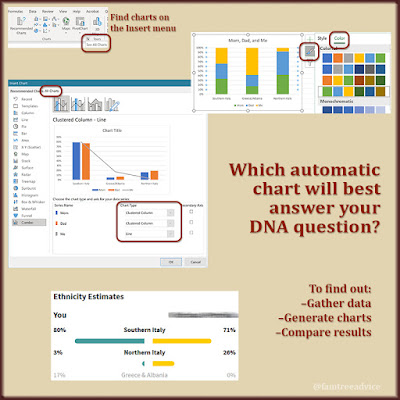In 2019 the worst possible scenario happened to my family tree. A routine synchronization with Ancestry.com corrupted my Family Tree Maker file. For whatever reason, the file became damaged at a particular person.
My only option was not a great one. I had to download my existing tree from Ancestry to FTM as a new file. Mind you, I do all my work in FTM, and Ancestry handles a few things differently than FTM.
This new tree wasn't bad, but:
- All my carefully crafted source citations "blew up"
- My thousands of media files were no longer assigned to categories.
Those citations and media categories were important to me!
Ever since then, I've been fixing my citations and adding back those media categories.
I'll bet you have a handful of things you'd like to fix. Here are 3 different fixes that will strengthen your family tree.
1. Find and Replace
My family tree is about 95% 19th century Italians. When I record a person's occupation from an old Italian vital record, I enter it in Italian. For example, falegname. I have an Excel spreadsheet with 910 Italian occupation words and their translations. I've memorized some (falegname = carpenter), but I have to look up many others.
I decided it'd be better to include the word in both languages in my family tree file. To do this, I used Family Tree Maker's Find and Replace function. I searched my tree for a word like falegname and replaced it with this: falegname (carpenter).
 |
| If you find a typo or want to update what you call something, use Find and Replace. |
Once in a while I'll see a typo as I begin typing something and the program offers suggestions. I saw one typo where a word (I couldn't remember which word) had a double letter a instead of a single letter a. I used Find and Replace to search for "aa"—skipping over a couple of men named Aaron until I found the word I wanted. Then I replaced that double a with a single a.
Do you have any inconsistencies in your tree notes that you'd like to fix up?
2. Make Your Media Easier to Find
FTM lets you assign a category to each media item in your family tree. These categories were all erased when I downloaded my tree from Ancestry. I'd been fixing them as I found them, but it's been a long time, and they weren't done.
Then I found the shortcut. You select multiple images in FTM's media library, right-click and choose "Categorize Media." Then you choose the right category from your list and you're done.
 |
| Categories make it easy to (for one thing) make all your family photos private. |
Did you know you can create custom categories? In the window where you select a category, you can click the Add button and create a custom category. My family tree has a handful of documents from the Japanese "internment" camps of World War II. I never knew how to categorize these, so I created a new category called Internment.
You can also delete standard categories that you don't want to use.
3. Put Your Places on the Map
I've spent a lot of time fixing the place names in my family tree. Long ago I saw how FTM creates a hierarchy with every address or place in your tree. There's a folder, if you will, for each country. You can expand each one to see:
- folders for states or regions
- then counties or provinces
- then towns, and
- each place you've entered.
If the program can't find a place on the map, it will have a question mark on it. This means something is wrong and needs your attention. I have three question marks at the top level of my list, but they're on purpose. I also have a couple of towns that FTM's mapping system does not recognize. Those street names are loose in a province folder, instead of being in their own town folder.
 |
| Imagine seeing at a glance all the relatives who lived at one address. |
I recently updated a list of very old street names from my grandfather's hometown in Italy. Those old names don't exist anymore. Luckily, I have a reference book that helped me translate those old names into streets I can find on today's map. I keep a list handy that tells me what to enter in FTM when I see one of the ancient names on a document. Now I can find these places on my next visit.
Which of these family tree fixes resonates the most with you? I do have a fourth fix I need to do, but there is no shortcut. Downloading my tree from Ancestry wrecked my source citations by separating them. If I had one source for a census form that and shared it with six different people, I now have six separate citations. That's not how I want it to be.
That particular crisis led me to change and improve how I make source citations. Because it's an overwhelming task, at first I fixed only my direct ancestors. I fix others as I find them. Did I mention my family tree has more than 30,000 people and almost 15,000 vital records? It's a big task.
For more clean-up tasks for your family tree, see "Your All-in-One Family Tree Clean-up List."












